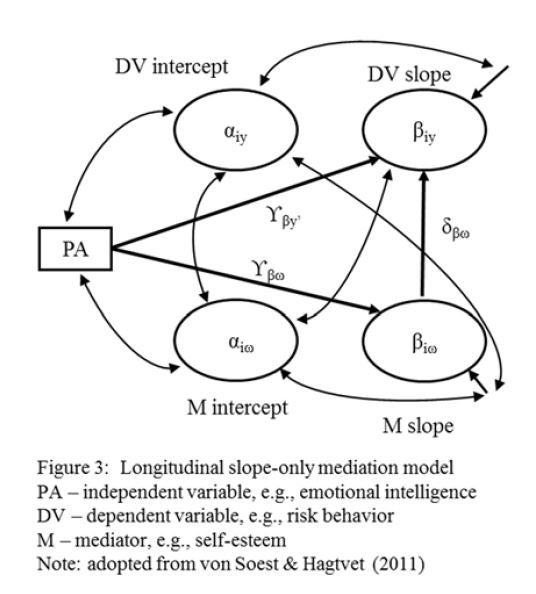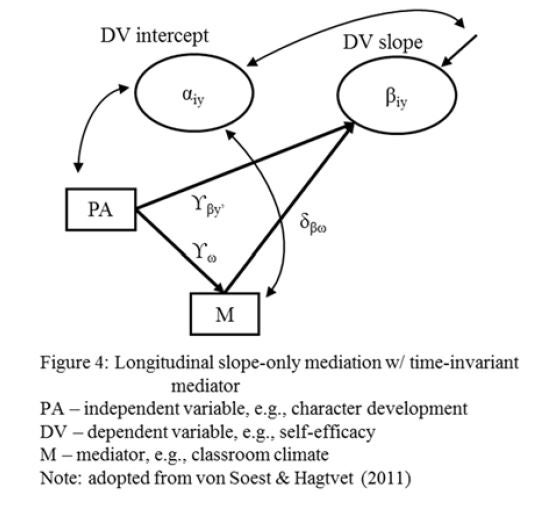Aim 1a
Goal: To test the hypothesis that changes in school and classroom climate mediated effects of the program on student SECD outcomes
Data related to climate are collected from both teachers and students. It is hypothesized that climate measures explain some of the positive effects of PA on student outcomes (i.e., partial mediation). Because climate reports can and most likely do change over time, mediation of climate variables as time-variant will be tested. Therefore, the primary model will be the PPM followed by the LDS model when necessary.
Various climate constructs will be tested using student-level measures of attitudes and beliefs following the PPM to LDS approach (see Figure 3). In addition, data reduction steps will be investigated to identify the most effective measures of classroom and school climate prior to PPM analyses.
The proto-path diagram for these tests is: PA –> climate mediator –>student outcome. However, because there are only 14 schools and only 28 classrooms of cohort students, there may not be enough statistical power to model school or classroom-level climate measures in a PPM. In these instances, climate mediators will be treated as time-invariant in the LGCM.

Figure 3 (above) represents a slope-only model for testing an effect of PA learning (e.g., emotional intelligence measure) on positive behavior (e.g., risk behavior measure) via a mediator (e.g., self-esteem). Slope-only models are also called parallel process models (PPM (Cheong, MacKinnon, & Khoo, 2003) in that they model the change in a mediator that predicts change in the dependent variable (i.e., DV). Because slope-only models are unable to completely support the temporal order that is necessary for testing causal relationships, PPM analyses will be followed with Latent Difference Score (LDS) models suggested by Selig & Preacher (2009) and used in other research testing longitudinal mediation (Ferrer & McArdle, 2003; McArdle & Hamagami, 2001). LDS models use value-differences between adjacent observations as a latent construct, thereby providing the opportunity to assess causal order.

Figure 4 (above) represents a longitudinal slope-only mediation model with a time-invariant mediator while controlling for baseline levels of the dependent variable. Time-invariant mediators can be both observed and latent, and both types will be tested for their ability to mediate the effect of PA on the growth of outcome variables.